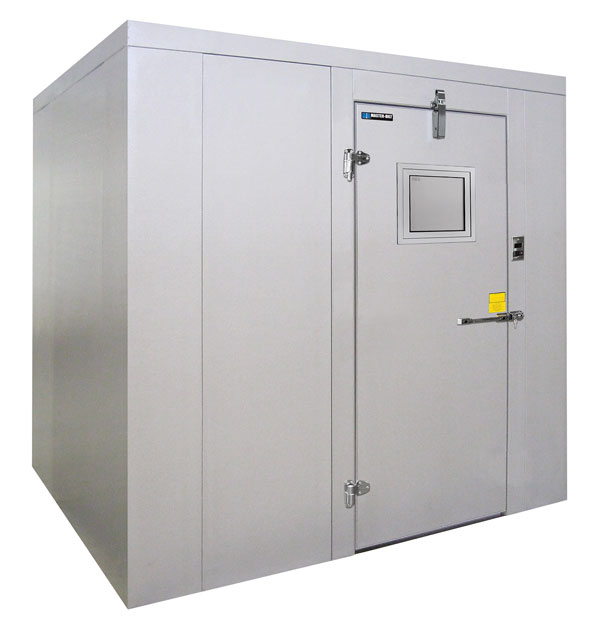
With energy costs steadily increasing, keeping an energy efficient walk-in cooler or freezer is more important than ever. One of the best ways to save energy is by keeping your walk-in airtight. When cold air leaks out from inside, your refrigeration system must work harder to keep stored items cold. And, since most air leaks tend to happen around doors, you should keep them in good shape.
The door is arguably the most vital, and yet most abused, part of a walk-in. To keep your walk-in airtight and increase energy efficiency, doors must close completely and form a seal against warmer outside air. But when doors are constantly opened and closed, it’s easy for them to get damaged. That’s why it’s important to inspect your door and its components regularly and insure they are in good working order.
Three main components on the door support the seal: hinges, gaskets and door closers. Learning more about these parts will help you understand their function and how to take care of them so you have a securely sealing door.
Hinges
Hinges, of course, hold the door to the frame but they also help keep doors level. If your door is sagging, cool air is escaping. Look along the top edge and sides of your door and if there’s a gap between the door and panel that’s wider on one end than the other, it’s time to adjust. In many cases, you can level the door by adjusting the hinges.
Doors are adjusted in different ways so check your manual or consult your installer, sales representative or manufacturer. Some manufacturers provide adjustable hinge plates help with the process. These plates are foamed-in-place inside the door behind each hinge and allow you to adjust the door horizontally and vertically as needed.
Gaskets
Made of vinyl or plastic, gaskets fit around the inside top and edges of the door to prevent cold air from escaping. Most gaskets have a magnet inside them that attracts to the frame metal and snaps the door shut within an inch or so. It’s a good idea to routinely inspect for torn or pulled out gaskets and repair as needed. If you need to replace the gasket, it’s usually easy to pull it out of the door and install a new one. Smaller tears may be repaired with silicone caulk.
Along the bottom of the door is a sweep gasket. Just like the gasket along the door edges, its purpose is to keep cold air inside. The sweep gasket is vertically adjustable and you should make sure it is not positioned too high or low.
With the door completely closed, the proper distance between the bottom of the attachment area of the sweep gasket and the threshold or building floor must be ½ in. Any less and the gasket will cause friction on door opening and wear out faster. Any more and the lower lip will not contact the threshold or floor allowing outside air in.
As with other gaskets, also inspect the sweep gasket for wear and tear.
Door Closers
Door closers are found at the top of the door and are usually hydraulic or spring activated. As the door closes, a roller mounted on the door fits into a hook on the frame and the door is pulled shut.
If the closer becomes misaligned, the only adjustable part is the hook, so any correction must be made there. Don’t bend the hook as a means of adjustment. The hook is formed and tempered to resist deformation during normal use.
If the roller is too low, loosen the hook bracket screws and add flat washer(s) between the bracket and the header where the top two screws will keep them in place. Tighten the screws and check the hook position.
If the roller is too high, loosen all hook bracket screws and add washer(s) between the bracket and the header where the bottom two screws will keep them in place. As with the first adjustment, tighten the screws and check the hook position.
If the roller arm is accidentally bumped into a vertical position while the door is open, move it to the horizontal position before the door is closed to avoid damage.
The Key To An Airtight Walk-In Is The Door
Keeping your walk-in airtight is especially important when it comes to energy savings. And it all begins with taking care of your door. Making sure your hinges, gaskets and closers are in proper working order will go a long way towards carrying out the task.



